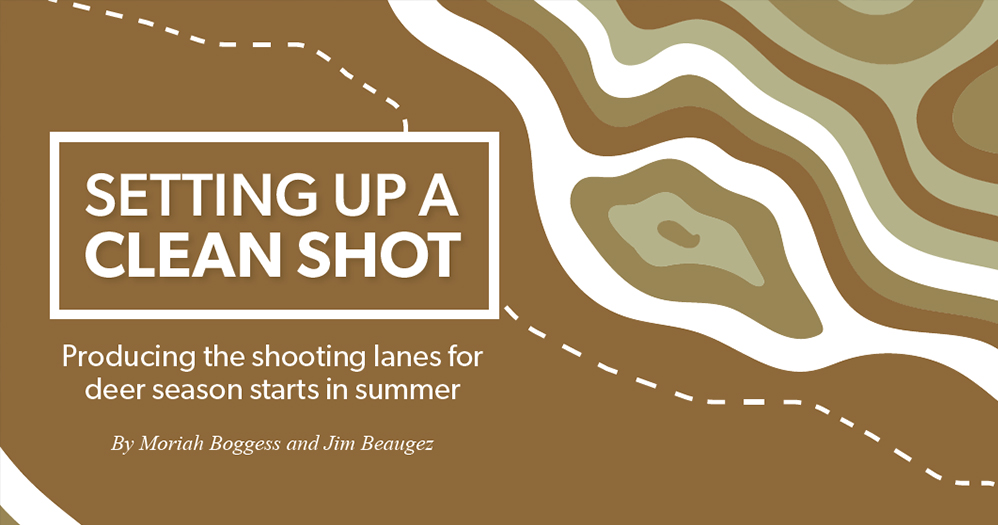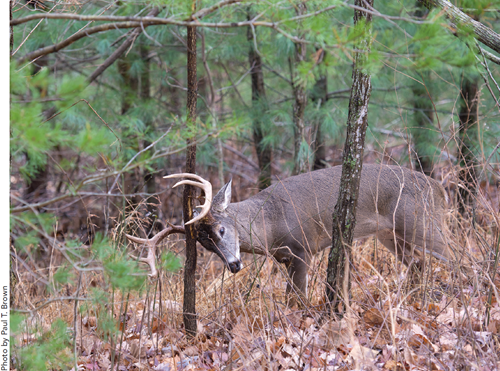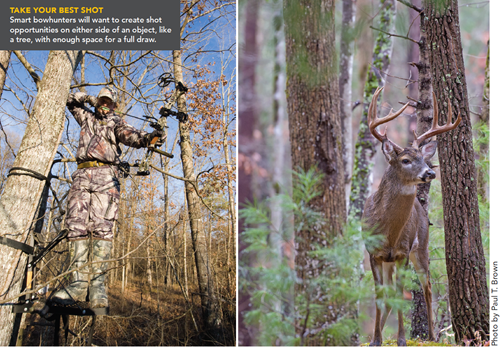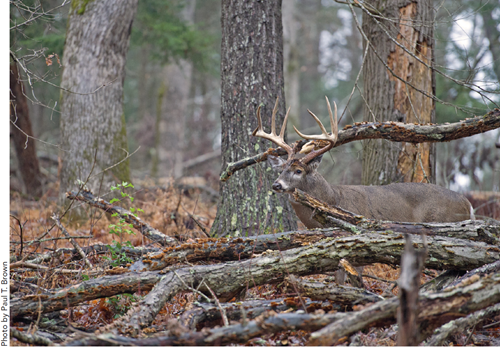7/27/2020 10:27:52 AM
By Moriah Boggers and Jim Beaugez

Properly trimming deer shooting lanes is not as simple as bush hogging any old space on your land. Remaining well concealed is just as important as where you clear the lanes and ensuring you have a clean shot.
If you are serious about deer hunting, it is time to get serious about learning how to take advantage of your habitat and creating expert-level shooting lanes. Here are some tips for improving deer shooting lanes in the offseason:
To find the deer, follow the food
Naturally, it is best to create shot opportunities where the deer are going to be. Pick a spot to hunt based on food and how much deer activity you see, either in evidence like rubs and scrapes or on a trail camera. Then, select your spot to hunt. There is a big distinction that needs to be made here: Are you hunting for a spot where you could see a long way, or are you hunting for a spot where you are going to be close to deer?
Choosing the right overhead cover is key
The name of the game is to give yourself the maximum possible visibility while remaining invisible to deer. Start by selecting a tree with a lot of cover, and then pick where you want to take your shots. You want a tree that is big enough to hide your silhouette, such as an oak or a tree with multiple branches high up that you can intermix with, so you are not just a blob hanging off the side of a pine tree.

Pinch points are productive
Many hunters pursue deer from the ground as well as from tree stands. But regardless of how you hunt, locating pinch points will serve you well. Tree lines that lead to changes in topography are excellent spots to scout for activity. In a rut hunting scenario, when you know the deer are pinched down into a particular area — say there are a couple of sloughs or oxbows — look at where you can set up and have deer within range of your bow or rifle.
Multiple spots increase your odds
Make sure your tree and bush trimming serves a purpose, based on where you think the deer will walk. Whether you are on the ground or up in a tree, you do not want to trim everything that leads to you, because that defeats the purpose.
One solution is to trim gaps between your hunting position and the game trail. For example, if you are set up perpendicular to a trail so the deer will hypothetically walk past you at 30 yards, then in that 30-yard span you would trim maybe three or four spots where you know deer are going to walk. This will give more opportunities. You always want to have a backup spot because if you are hunting during the rut and a buck comes running through and you only have one shooting lane prepared, it is very possible he will sneak right by you.

Hunting with a bow presents unique challenges
Many hunters welcome the challenge of hunting with a compound bow. If you are one of them, you will need to approach how and where you build shooting lanes differently.
With a bow, you need enough room to get a full draw, so it is smart to think about creating shot opportunities on either side of an object, like a tree. When the deer is walking behind the tree you can pull to a full draw, and when he steps into your shooting lane it all works together perfectly. Plus, you will not be stuck holding your bow at full draw for a minute, or having to draw while that deer is out in the open.
When hunting with a gun, you can open up the woods more. You still need to retain that cover near you, so you have some concealment, but then farther out you can open up shooting lanes more. However, with a gun it is a lot easier to slip your shot through a small opening, so you can definitely create little pockets.
Cutting trees can create a new food source
Often, out of curiosity, deer will walk right up to a dropped tree and smell it, and maybe browse any new growth. A smart hunter can definitely use that to his or her advantage. If you clear your shooting lanes in summer and cut down small trees, anything from 1 to 10 inches in diameter, will resprout from the stump. That is nutritious and highly attractive to deer, so you can actually create a small food source within your shooting lane. Consider this as two birds with one stone just by cutting the trees.

Everything you cut can be reused
The leftover tree tops and branches can be used to construct a blind. If you are in a tree stand or on the ground and there is an opening in front of you, you can take those tree tops and fashion a sort of wall. If you build that obstacle to 15 to 20 yards out, that is just enough to keep deer at a safe arm’s distance. They will not end up walking right up in your lap and smelling where you walked, or happen to see you because they are so close.
Do not worry about spooking the deer
Deer are constantly in a world of change, whether from fire or any other natural disturbance, like a wind storm. Trees are constantly getting blown down around them. Trees that have been cut down are not suspicious to deer. However, if you open up an area and cut down every tree within 40 or 50 yards of your stand, you have created a different habitat, which will affect how deer react to it.
As a parting rule of thumb, something all hunters should keep in mind — whether you are clearing a lane on private land or scouting a location on a public WMA — you can see a long way in the desert, but it does not mean animals are there.
Jim Beaugez is a freelance writer for Mississippi Outdoors. Moriah Boggess is a graduate student at the Mississippi State University Deer Lab.









